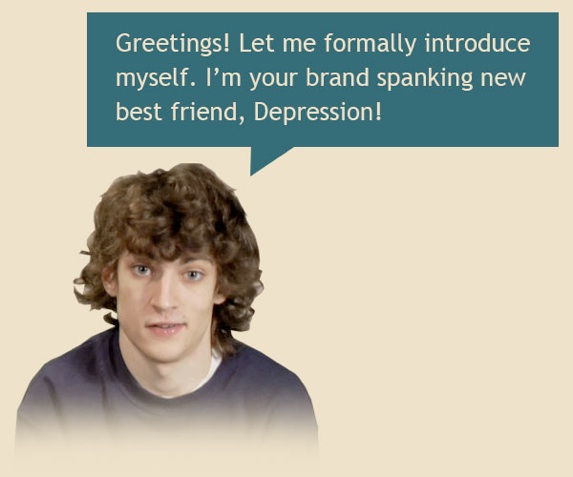Latest Public Service Radio Minute
Loss of EmploymentLoss of Employment, MP3, 1.3MB
Listen to or download all our PSAsSupport Our Work
Please donate so we can continue our work to reduce the stigma of psychiatric illness, encourage research, and support educational activities for behavioral health professionals and the public. Ways you can donate and help are on our Support and Donations page. Thank you!
More InfoLatest News Around the Web
Individuals Experiencing Mental Health Crisis May Be Less Likely To Be Arrested Following 911 Call If Police Officer, Mental Health Professional Respond To Call Together, Researchers Say
Psychiatric News (8/27) reported, “Individuals experiencing a mental health crisis were less likely to be arrested following a 911 call if a police officer and mental health professional responded to the call together compared with if the police responded alone,” researchers concluded after analyzing “data collected as part of a co-response team…pilot in an Indianapolis Metropolitan Police Department from August 1 through December 31, 2017.” The findings of the 628-participant study were published online Aug. 26 in Psychiatric Services, a publication of the American Psychiatric Association.
Related Links:
— “People Experiencing Mental Crisis Less Likely to Face Arrest When Police Pair With MH Professionals, Psychiatric News , August 27, 2021
History Of Childhood Maltreatment, Trauma May Be Found In Adults With Body Dysmorphic Disorder, Small Study Indicates
Healio (8/27, VanDewater) reported, “A history of childhood maltreatment and trauma was commonly found in adults with body dysmorphic disorder [BDD], and the severity of these events correlated with symptom severity,” investigators concluded in a study that “recruited 52 participants with BDD (56% women) and 57 matched participants (51% women) without mental illness through public and online ads and through BDD-specialized clinics.” The study revealed that “within the BDD group, more severe overall maltreatment correlated with more severe symptoms, suicidal ideation and anxiety symptoms; having more types of maltreatment correlated with more severe symptoms and increased risk for mental comorbidities,” whereas “in the control group, more severe overall maltreatment, emotional abuse and emotional neglect significantly corresponded with more severe stress and anxiety.” The findingswere published in the August issue of the journal Comprehensive Psychiatry.
Related Links:
— “Childhood maltreatment, trauma common in body dysmorphic disorder “Kalie VanDewater, Healio, August 27, 2021
Melatonin appears to be safe sleep aid for people with metabolic diseases and for healthy adults, systematic review indicates
Healio (8/26, Schaffer) reports, “Melatonin may be a safe sleep aid for people with metabolic diseases and for healthy adults, and data suggest a beneficial glucose effect,” researchers concluded in a “systematic review and meta-analysis” that “assessed the effect of at least two weeks of daily treatment with melatonin on fasting glucose, insulin, insulin sensitivity and HbA1c levels across 11 randomized, placebo-controlled studies (n = 603).” The findings were published online in Clinical Endocrinology.
Related Links:
— “Melatonin safe sleep aid for adults with metabolic diseases “Regina Schaffer, Healio, August 26, 2021
Suicidal Ideation In Early Adolescence May Predict Other Symptoms Of Depression, While Depressive Symptoms In Middle Adolescence May Predict Suicidal Ideation, Study Indicates
Healio (8/26, VanDewater) reports, “Suicidal ideation in early adolescence predicted other symptoms of depression, while depressive symptoms in middle adolescence predicted suicidal ideation,” investigators concluded after assessing the “de-identified data of 4,208 adolescents (90% Hispanic; 56% girls) aged 11 to 17 years with previous depression diagnoses available in urban pediatric primary care records from 2015 to 2017.” For study purposes, “participants aged 11 to 13 years were categorized as early adolescents, and those aged 14 to 16 years were considered middle adolescents.” The findings were published online ahead of print in the October issue of the Journal of Psychiatric Research.
Related Links:
— “Suicidal thoughts predict depression symptoms more in early adolescence “Kalie VanDewater, Healio, August 26, 2021
Benzodiazepine-Involved Overdoses Increasing, Researchers Say
MedPage Today (8/26, Gever) reports that even though “absolute numbers of fatal benzodiazepine-involved overdoses remained small (less than 3,000 in 2020)…the percentage increase from April to June 2019 to the same period in 2020 was not: 42.9%.” In addition, “total overdoses treated in emergency departments (EDs) with benzodiazepines detected also increased sharply.” In fact, “the proportion of all ED visits involving such cases rose 23.7% in 2020 over the previous year, and for those also involving opioids, it increased 34.4%,” CDC researchers concluded. The findings were published Aug. 26 in the CDC’s Morbidity and Mortality Weekly Report.
Related Links:
— MedPage Today (requires login and subscription)
Foundation News
Nothing Found
It seems we can’t find what you’re looking for. Perhaps searching can help.

